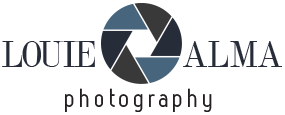Most Photographers Are Guilty of this Noise Mistake (VIDEO)
Are your photos consistently ruined by digital noise even when you thought your camera settings were correct? Perhaps you’ve asked yourself why your photos look grainy, or when it’s safe to shoot with a high ISO. These questions and others will be clearly answered in the six-minute tutorial below.
Today’s eye-opening episode comes to us from Great Big Photography World, a supportive YouTube community comprised of long-time experts who cater to shooters of all levels and provide solid tips and techniques on camera basics, composition, lighting, and post processing.
The goal of our unnamed instructor is to demystify the critical concept of ISO and reveal “the truth” about how this setting affects noise. He puts it like this: “Most beginners and even experienced photographers make the same ISO mistake that quietly destroys image quality. In this video we’ll break down exactly what it is, how it affects your photos, and simple solutions for avoiding these unwanted distractions.”
In simple terms, it works like this: Every time you double ISO you’re doubling the camera’s sensitivity to light. But there’s a catch because while high ISO settings are useful in low-light environments, the tradeoff is digital noise.
It all depends on the camera you own, but the general notion is that “at 1SO 100 images look clean and sharp. At ISO 400-800 photos remain acceptably sharp but noise begins creeping in. At ISO 1600 you may notice visible grain, color fading, and reduced contrast, and higher settings degrade image quality further.” At some point your images will become useless depending upon how high you go.
As you’ll see, however, there are times when you may want to push ISO beyond normal limits to achieve creative effects, but the general rule is to set ISO to the lowest possible value that delivers a correct exposure for the lighting conditions at hand. Our instructor recommends this: “When the shutter speed is too slow to avoid blur, then increase ISO.”
Be sure to visit the Great Big Photography World YouTube channel where you’ll discover more how-videos for elevating your skills.
And don’t miss the tutorial we featured earlier with a post-processing expert who provides a straightforward beginners guide to editing Raw photographs in Photoshop—with a variety of techniques for adjusting exposure, color, detail, and more.




